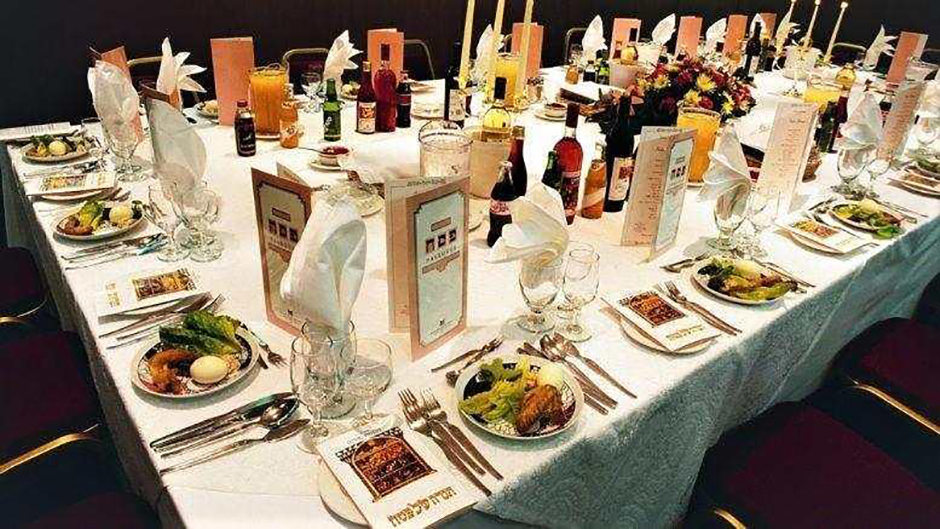click to dowload our latest edition
CLICK HERE TO SUBSCRIBE TO OUR NEWSLETTER


Published
3 years agoon
By
Jordan MosheIf you thought that the Pesach seder experience was universal and uniform, think again. While many of us may be used to a standard routine, communities around the world partake in a colourful yom tov experience that goes well beyond matzah and maror.
For many of us in South Africa, a seder typically follows the same procedure every year. After returning home from shul, we hasten to the table to begin the evening, moving through kiddush, hand washing, and telling the exodus tale. Each person adds an insight (“that was deep, Shirley”), little Joshy sings Ma Nishtana at the top of his voice (“he’s going to be a chazzan when he grows up”), and, after some wine and matzah sampling, we (finally) come to the meal itself.
For many families, however, vibrant and unusual customs enliven the evening. In Gibraltar, for example, the sweet charoset paste contains not only apples and wine, but a dash of brick dust as well. Although it shouldn’t affect the taste of the spread, the dust serves as a more realistic reminder of the mortar which the Jews produced in Egypt while making bricks.
Some people made this more literal by using actual bricks at their seder. Such was reportedly the case during the American Civil War, when Union soldiers sought out the resources to hold a seder in 1862. Unable to produce charoset, they used a brick, which, as one Jewish soldier wrote, was “rather hard to digest, [but] reminded us, by looking at it, for what purpose it was intended”.
Some communities focus on each individual at the seder using the seder plate. A custom that reportedly originated in Spain is for the seder leader to walk around the table three times with the seder plate in hand, tapping it on the head of each guest. Many North African Jews adopted this tradition, which is said to bless those whose heads are tapped, and each time this is done, the leader says, “In haste, we left Egypt.” Every person is thus made to feel as though they are personally redeemed from slavery.
With some theatrical flair, many Sephardi communities have the tradition of putting on a short skit to illustrate the story of redemption. A seder attendee (usually the host) poses as an Israelite who experienced the exodus. Carrying the afikoman in a bag over his shoulder (and perhaps sporting a staff for support), he enters the room and a dialogue follows.
The table asks, “Where are you coming from?” “Egypt,” comes the reply, sometimes followed by a brief story of the Israelites following Moses out of slavery. “And where are you going?” someone at the table asks, to which the traveller responds, “Jerusalem.” Finally, the table asks what the bag contains, and is informed that it contains matzah.
Another Sephardi custom which departs from the norm takes place when the ten plagues are recited. Unlike many Ashkenazim, some Sephardim don’t dot a plate with wine drops, but instead pour from their cups into another vessel. Because this wine is associated with plagues and is therefore “cursed”, it must be flushed down the drain and the vessel used to hold it thrown away. For this reason, some use either a disposable cup or their least favourite bowl that won’t be missed if thrown out.
If you’d like to add some bling to your table, perhaps emulate the custom of the Hungarian Jewish community. In line with the verses in Exodus that say that the Israelites received gold and silver from the Egyptians, Hungarian Jews had a tradition of placing their gold and silver jewellery on the seder table. If that’s too showy for you, you may want to bring some humble scallions to the table instead. These were traditionally used by Jews in Afghanistan, who reportedly used scallions or leeks to represent Egyptian slave drivers’ whips, and used them to beat one another lightly on the back at the seder table.
If the splitting of the sea is something you’ve always wanted to experience, perhaps give a Polish custom a try. Gerer Chassidim who hail from the Polish town of Góra Kalwaria had the custom of bringing the sea into their homes, reportedly draining a barrel of water across the floor and re-enacting the crossing of the sea by lifting the hems of their coats and walking through the pool. Traditionally, they would name the towns they would typically travel through in the region while “crossing”, toasting each destination and thanking G-d for helping them to reach their destination.
So, whether you want to pour water across your dining room floor or beat your guests with vegetables, you can enact some less than usual seder customs at your table this year rather than keep up with the Cohens.
